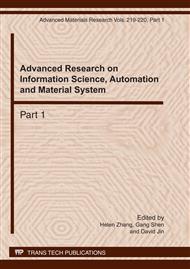p.828
p.832
p.836
p.842
p.846
p.851
p.855
p.860
p.865
A New Airborne Passive DF Method only Based on Frequency Difference
Abstract:
If three antenna units are divided into two set and two baselines are placed at right angles to each other in flight plain, in which the direction of one baseline is parallel to the actual flight direction of air vehicle, the sine and cosine function of target bearing respectively in two baseline directions can be simultaneously obtained according to the analysis principle of the direction cosine change rate. The angulations’ formula only based on Doppler frequency difference can be derived after eliminating the unknown parameters including angular velocity and wavelength by the specific value of two circular functions. The analog calculation shows that the relative error is in direct proportion to the baseline length provided that the incident wave is parallel in derivation. But the error analysis depicts that the measurement accuracy is in direct proportion to the baseline length. Moreover, the measurement error relies on mainly the accuracy of frequency measurement. Furthermore, the derived formula has irregularity in airborne axis direction. However, since the new method is not associated with wavelength, this new DF only based on Doppler frequency difference will be more adapted to passive sounding as compared with phase interference method.
Info:
Periodical:
Pages:
846-850
Citation:
Online since:
March 2011
Authors:
Price:
Сopyright:
© 2011 Trans Tech Publications Ltd. All Rights Reserved
Share:
Citation:


